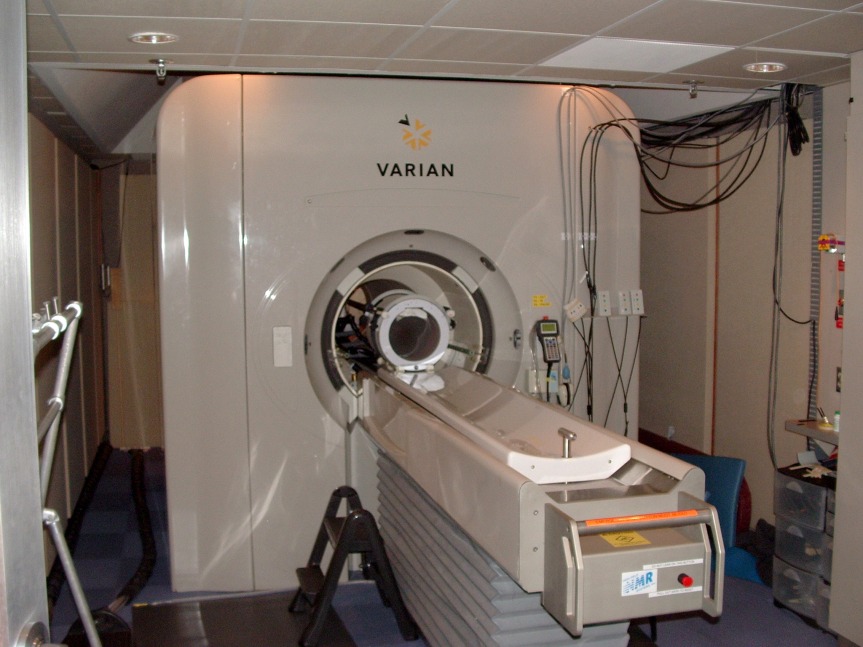Animal rights groups often argue (Warning: AR Website) that new imaging technologies, such as fMRI, provide an alternative to invasive brain research in animals, accusing those doing animal work of failing to adopt these modern methods. Such a position reflects a misunderstanding of what these instruments measure and their limitation in studying how the brain works. [More information on the limitations of replacement technologies can be found in the “Alternatives?” Section]
Our perceptions, thoughts, speech and decisions are carried out by a complex network of neurons that communicate through brief electrical impulses about one millisecond in duration (so called action potentials or ‘spikes’). These electrical impulses allows the brain to perform all its amazing computations in real time, such as recognizing faces, keeping your balance, and understanding speech. In other words, spikes are the currency of computation in the brain. To study how the brain is capable of these feats we need, therefore, to measure directly how populations of neurons communicate with each other by means of spiking activity.

A central problem here is that neurons are very small (their bodies are about 25 micro-meters in diameter) and they are tightly packed together. As an analogy, consider a football stadium full of spectators. The problem is akin to developing a method to listening to the conversation of two individuals in the middle of this noisy crowd. Clearly, without getting a microphone close enough to them, the background noise would make the measurement nearly impossible. You cannot listen to an individual conversation with a microphone hanging in the middle of the stadium. The micro-electrode, an insulated wire with a diameter smaller than a human hair, is such a “microphone” that allows us to record the spikes of individual cells in the working brain by getting close enough to the individual cells.
Is there a way to measure the activity of single neurons non-invasively? The short answer is no. What about fMRI? fMRI does not measure neural activity directly, but instead relies on indirect changes in blood flow and volume triggered by modulation in neural activity. To begin with, one problem is that we still do not know how fMRI measurements relate to neural activity. Clearly, to be able to understand how fMRI signals relate to neural activity we need to measure both simultaneously, work that will also require the use of animals. This exemplifies that without animal research there will be no alternatives either. In addition, fMRI has a limited spatial resolution of about a cubic millimeter. In such a volume, one can find 100,000 neurons. In other words, the ‘fMRI microphone’ cannot listen to individual cells, but to a whole stadium full of them. Finally, we already know that fMRI signals are much slower than neuronal activity, as the time course of hemodynamic signals is in the order of 5 seconds. As neurons work tens of times faster (you can recognize an image in about 200 ms), the dynamics of fMRI signals are too slow to understand how brains compute in real time. Instead, fMRI provides useful information about what brain areas might be involved in certain tasks. After these areas are identified, electrophysiological measurements can be used to measure the activity of single neurons in those areas. Such a strategy is now proving extremely useful in neuroscience research.
When animal rights activists demonstrate at UCLA carrying a sign stating “Support alternatives to animal research” they don’t need to convince us. We fully support and work towards the development of alternative, non-invasive methods. Their sign is designed to suggest to the public that such methods currently exist and some scientists refuse to use them. As we explained above this is not true. Furthermore, the development of alternatives cannot be done without the use of animals. The relationship between neural activity and the BOLD response in fMRI signals is one example of this process. Only after such validation takes place, could one then proceed to apply the method with confidence in humans.
Regards
Prof. Dario Ringach (bio)

The limits of fMRI research are well-known by those who work in the area I think, however the media love running brain-scanning stories and this might lead to some less-informed (*ahem*) individuals in animal-rights groups believing it to be some kind of panacea for the problem of animal work.